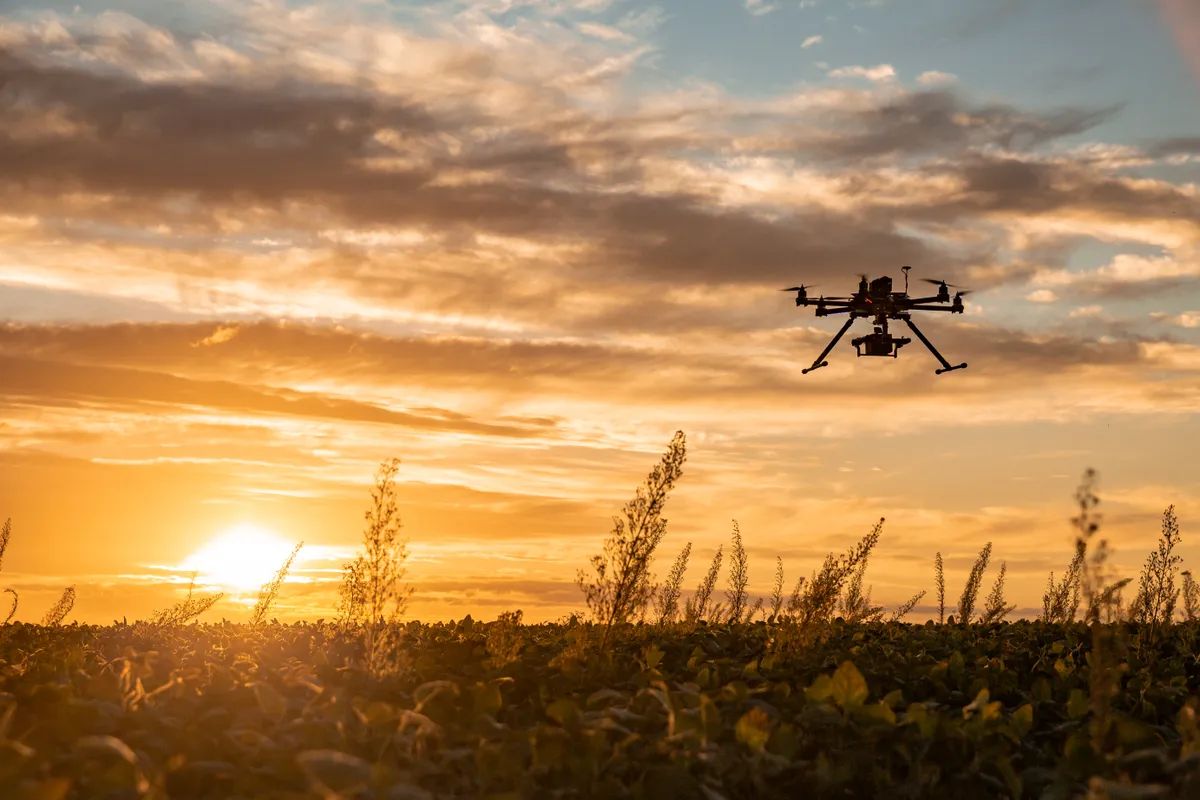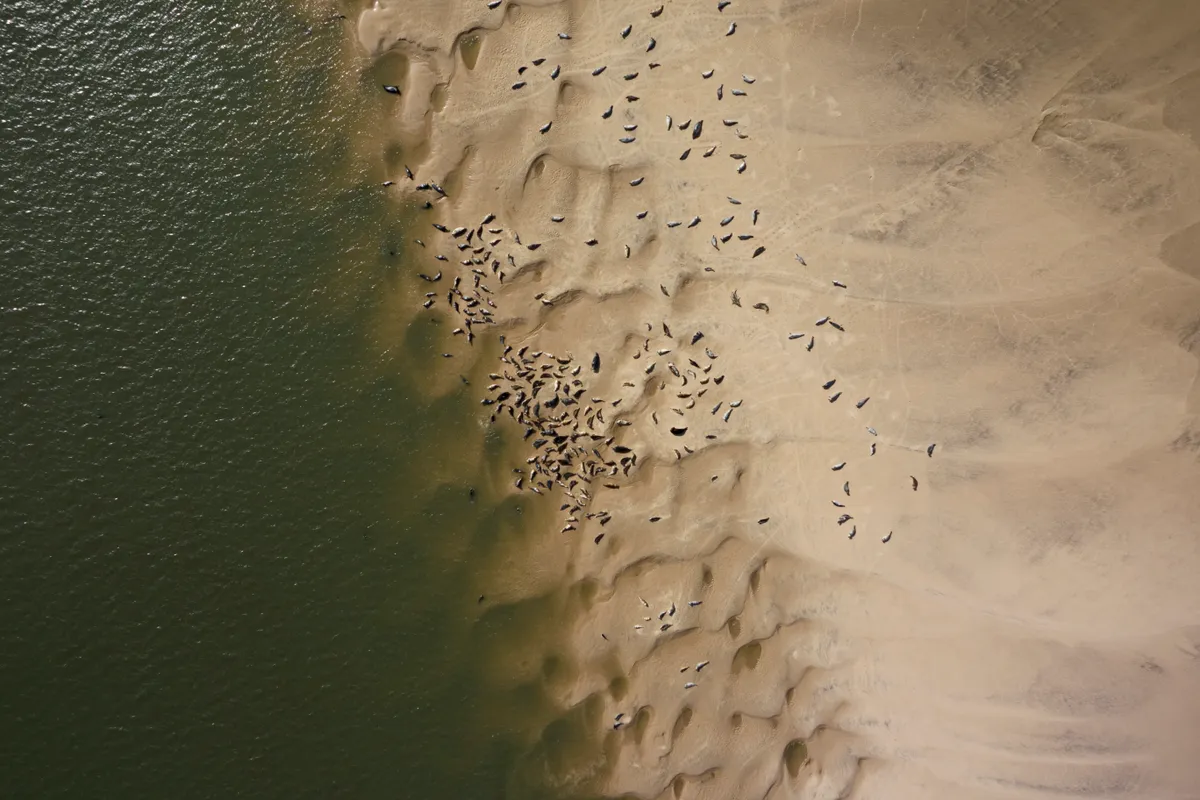Previously the realm of big-budget film and TV shows, aerial photography of our beautiful countryside is now within everyone's reach, thanks to affordable drones with high-quality cameras on board. Teenagers can also spend hours flying a drone on a day out, testing their vehicle to its limits. But it's vital to be considerate of our natural spaces and of wildlife, as well as understanding your legal obligations, especially as new laws have come into force.
Here is the BBC Countryside magazine guide to flying a drone safely and responsibly in the countryside.
What is a drone?
A drone – sometimes referred to as a UAV (Unmanned Aerial Vehicle) – is any powered flying vehicle that doesn't have a human operator on board, so model aircraft can also be classified as drones. They can be programmed to fly autonomously, some are remote controlled, some fly only once and are used for mapping or military operations, and the ones most of us are familiar with are built for aerial photography or as toys for teenagers (and their older family members!).

What are the laws about flying drones?
The Civil Aviation Authority (CAA) sets the law for flying drones in the UK. New drone-flying legislation came into force in 2022, and all drone pilots must now follow these rules.
- Drone operators must fly below an altitude of 120 metres (400ft).
- Drone pilots must not fly within a 5km radius of any airport’s boundaries.
- Drones weighing over 250g and with a camera need to be formally registered with the CAA. Registration gives you an operator ID (£10) and a flyer ID (free of cost). You must have both of these IDs to legally fly a drone that weighs over 250g.
- You need to pass a basic official flying test to get a flyer ID. The flyer ID is valid for five years. Children – even those under the age of 12 – also need to take the flyer ID test to fly a drone weighing over 250g.
- You will also need an operator ID if your drone weighs under 250g but has a camera.
- Drone operators with drones weighing over 250g must be able to present their registration documents if requested to do so by the police, so carry them with you when you're using your drone.
- Drone pilots will be required to take an online drone safety test before they’re allowed flying time.
Read the Drone and Model Aircraft Code here.
Do I need to register my drone?
If you are flying well away from groups of people and built-up areas and have a drone that weighs below 250g and no camera, you do not need to register with the CAA. But if your drone weighs 250g and has a camera then you do need to register, and will need an operator ID to fly it. A drone with a 'class mark' on it of C1, C2, C3 or C4 will need to be registered with the CAA.
Find out more and how to register your drone here.
Where can I fly my drone in the countryside?
Large municipal parks are great places to fly your drone. However, National Parks, such as Dartmoor, have byelaws banning the use of drones on common land within the park, and will ask you to get the permission of the landowner if you are flying over farmland. You'll need to get the permission of the landowner if you are flying your drone over any farmland outside of a National Park, too.
Flying is also restricted at many nature reserves and Sites of Special Scientific Interest (SSSIs) to protect wildlife from disturbance; check online for local byelaws before you go, or look for signs at the site for guidance.
Bear in mind the following key rules in the Drone and Model Aircraft Code:
- Keep clear of aerodromes, airports and any restricted airspace.
- Always keep 50m away from people. Never fly directly over groups of people.
- Never fly higher than 12o metres (400ft).
- Always keep your drone in sight.
- Before you fly, check you're not in a no-drone-fly-zone.
See a useful map of no-drone-fly zones here.
How do drones affect wildlife?
Drones have been used as important conservation tools, but they can severely disturb some birds and nesting sites. To birds, a drone can look like a predator and can cause them to feel threatened and abandon their nests, take flight or hide. This means the birds waste energy and lose vital feeding opportunities, which can hamper their survival. Most Wildlife Trusts and many nature reserves request that drones are not used on their sites, unless you have been granted prior permission by the reserve.
Also, remember to always follow the Countryside Code.

Drones are banned on National Trust land
The use of drones is not permitted on or above National Trust properties or land, according to the trust's byelaws, unless you have the necessary Civil Aviation Authority qualifications, specific insurance and a licence granted by the National Trust. The National Trust says "Few non-commercial users have the correct training or permission to operate drones, which creates a serious risk to our staff, volunteers, visitors, property and wildlife. We have therefore adopted a strict blanket policy banning the use of drones at our sites."
The Trust also says drones with cameras attached could infringe data protection laws – due to filming people without permission – and could contravene the Trust's own photography and filming rules.
Find out more on the National Trust site.
How high can I fly my drone?
Always fly your drone or model aircraft below the altitude of 120 metres (400 feet). If you are flying your drone among hills, cliffs or mountains, adjust your flight path so your drone is never at more than 120 metres above the Earth's surface.
Look out and listen for other aircraft that may be flying at below 120 metres, such as air ambulances, police helicopters and military aircraft. Ground your drone immediately if you see a low-flying aircraft.
Interested in photographing wildlife? See our guide to the best kit for streaming footage of garden birds: